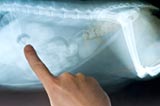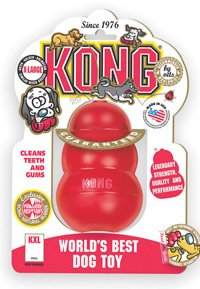

You always take the best possible care of your pet. You keep it up to date with its vaccinations and yearly check-ups. You bring it to the best veterinary clinic, the clinic that cares the most for you and your pet. Along the way, you may have had some emergencies or unexpected events to deal with. There is no question that you want the best care for your pet, but sometimes you wonder why it costs so much.
You are not alone. Many compassionate pet owners out there are struggling with the same problem. It just feels like the economy is down, salaries are down, yet the prices for veterinary care seem to keep going up, or at least are not going down. We never want to put a price on our pets’ lives, but sometimes it feels like we are forced to.
This article will explain the mysteries around the costs of veterinary care. It will talk about what goes into making a decision about prices. But let’s start first with a comparison to human medicine.
In Canada, we have the privilege of having government-paid health care. Yes, some people will argue against this system, but that’s not the point we’re concerned with right now. The point of bringing this up is that the vast majority of Canadians have no clue how much medical care actually costs. We never see a bill for the x-rays, antibiotics, testing, or even the office visit. You may be surprised at how much this all actually costs.
An office visit to the veterinarian may cost you $60-90. X-rays can generally cost $150 and up. In fact, these costs are generally far lower than the cost of your average human medical care. It’s just that you never see the bill for your medical care, so it may be hard to understand that veterinarians are not (for the most part; there will always be dishonest people in any field) ripping you off.
So now you ask; what exactly goes into creating a price for veterinary care? How do they calculate these prices? There are two components involved in the “price” of veterinary care. These same two components are essential to every other service, from tire changes to restaurant food. The first component is called “fixed costs”. This obviously involves the cost of the supplies, such as drugs, catheters, bandage material, needles, or any other item used during the treatment of your pet. It also involves ongoing costs of the clinic such as the building mortgage, salary of non-veterinarians, electricity, internet, and office supplies. The cost of all of these “fixed costs” is calculated into the price of a service.
The second component is labour. For any type of veterinary care, you are charged for the fixed costs, but are also charged for the labour on a dollars per hour basis. This is the money that indirectly goes toward the salary of the veterinarian.
Who does all these calculations? In Ontario, the Ontario Veterinary Medical Association (OVMA) provides an objective fee guide. This is based on the average costs and salaries. The prices (fees) in the OVMA fee guide are designed around the idea of affordable veterinary care for the client and a successful business for the veterinary clinic. It generates the fee guide by calculating all of the fixed costs and an acceptable labour cost. Of course, you must take the location of the veterinary clinic into consideration. A clinic in downtown Toronto will have higher fixed costs than more rural clinics, and will generally charge fees accordingly higher than the OVMA fee guide.
Don’t be shy if you are concerned about the prices at your veterinary clinic. Feel free to ask them how they come up with their prices. Ask them if they follow the OVMA fee guide. The vast majority of veterinary clinics would rather keep you informed about how they come up with their prices than have you upset over high prices.
And of course, don’t forget inflation. As costs of daily living go up, so must veterinary fees. Also, as veterinary medicine advances, we can do more to help our pets live longer, healthy lives. More options may mean more cost, but it also means a healthier life for our pets. If you have questions about any of the costs of veterinary medical treatment, your veterinarian should be more than happy to answer them.
 Basic Learning Theory and Dogs
Basic Learning Theory and Dogs
Basic Learning Theory and Dogs
Basic Learning Theory and Dogs
 Memory Foam Pad for Dog Bed
Using a memory foam pad for
Memory Foam Pad for Dog Bed
Using a memory foam pad for
 What Is My Dog Really Thinking?
Scientific Proof The proof i
What Is My Dog Really Thinking?
Scientific Proof The proof i
 Choosing the best dog toys for your dog or puppy
Choosing the Best Dog Toys - Plus Our Favorites!
Choosing t
Choosing the best dog toys for your dog or puppy
Choosing the Best Dog Toys - Plus Our Favorites!
Choosing t
 Great Dog Breeds: the Happy Little Papillon
The first time I was introdu
Great Dog Breeds: the Happy Little Papillon
The first time I was introdu
Copyright © 2005-2016 Pet Information All Rights Reserved
Contact us: www162date@outlook.com